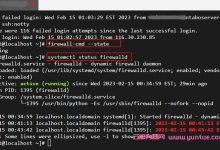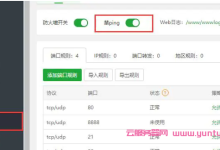众所周知,Linux服务器的安全是网络运行的基础之一,只有做好了安全,我们的网站或项目才能顺利稳定运行。当然,centos7安全相关设置有很多,我们可以通过Centos系统创建用户名密码、配置ssh安全端口、设置防火墙及系统安全等环境配置。今天,小编就详细介绍一下centos7下面的一些常见安全设置吧!

centos7安全相关设置
初始化及软件安装
## 固定IP地址
## 关闭SELINUX
[root@c72 ~]# vim /etc/selinux/config
SELINUX=disabled
## 更改主机名,让hosts文件与当前主机名保持对应关系
echo bre_sch > /etc/hostname
[root@c72 ~]# vim /etc/hosts
127.0.0.1 localhost localhost.localdomain localhost4 localhost4.localdomain4 bre_sch
::1 localhost localhost.localdomain localhost6 localhost6.localdomain6 bre_sch
# 关闭firewalld,后面的防火墙设置使用iptables
systemctl stop firewalld
systemctl disable firewalld
## 软件安装
cd /etc/yum.repos.d/
rm -rf ./*
curl -o /etc/yum.repos.d/CentOS-Base.repo https://mirrors.aliyun.com/repo/Centos-7.repo
yum-config-manager –add-repo http://mirrors.aliyun.com/docker-ce/linux/centos/docker-ce.repo
yum makecache fast
yum -y install docker-ce wget curl vim lrzsz nmap cifs-utils samba-client nfs-utils samba openssh iptables-services
yum install -y wget yum-utils device-mapper-persistent-data lvm2 net-tools
systemctl start docker
systemctl enable docker
user&密码
## 创建单独的登录用户,并设置满足复杂性要求
useradd bresee ; echo 123456 | passwd –stdin bresee
ssh安全设置
## ssh连接加速,不允许反向解析
UseDNS no
## 不允许root直接登录 ,仅允许普通用户登录
PermitRootlogin no
## 更改端口为7777
Port 7777
## SSH登录连续输错五次密码,账号锁定30秒
vi /etc/pam.d/sshd
auth required pam_tally2.so deny=5 unlock_time=30
systemctl restart sshd
防火墙设置
仅开放了ssh、http和https三种服务
# 清空规划
iptables -F
# 开启80
iptables -A INPUT -p tcp –dport 80 -j ACCEPT
iptables -A INPUT -p tcp –sport 80 -j ACCEPT
# 开启443
iptables -A INPUT -p tcp –dport 443 -j ACCEPT
iptables -A INPUT -p tcp –sport 443 -j ACCEPT
## 开启ssh侦听的7777
iptables -A INPUT -p tcp –dport 7777 -j ACCEPT
iptables -A INPUT -p tcp –sport 7777 -j ACCEPT
## 开启ICMP
iptables -A INPUT -p icmp –icmp-type 8 -j ACCEPT
iptables -A INPUT -p icmp –icmp-type 0 -j ACCEPT
iptables -A OUTPUT -p icmp –icmp-type 8 -j ACCEPT
iptables -A OUTPUT -p icmp –icmp-type 0 -j ACCEPT
## 开启DNS
iptables -A INPUT -p udp –dport 53 -j ACCEPT
iptables -A INPUT -p udp –sport 53 -j ACCEPT
# 默认拒绝所有
iptables -P INPUT DROP
# 保存
service iptables save
# 开机启动
systemctl enable iptables.service
#开启服务
systemctl start iptables.service
#查看状态
systemctl status iptables.service
系统安全设置
———————————————-# 设置grub密码
## 生成密码*Ab123456
grub2-mkpasswd-pbkdf2
## 在/etc/grub.d/00_header引用密码
vim /etc/grub.d/00_header
cat <
set superusers=’root’
password_pbkdf2 root grub.p54CBD4341FC4A71B90E543581646B4E7EAE920C54A
E0F
## 重新生成
grub2-mkconfig -o /boot/grub2/grub.cfg
————————————-禁止control+alt+delete键盘重启系统
mv /usr/lib/systemd/system/ctrl-alt-del.target /tmp
————————————-history带时间参数和30秒超时设置
vim /etc/profile
# history带时间
export HISTTIMEFORMAT=”%Y-%m-%d %H:%M:%S `whoami` “
# 设置 30秒内用户无操作就字段断开终端
export TMOUT=30
服务器机箱
服务器硬件加封,防止拆机箱;
BIOS和管理口加密,防止有人重装系统;
本文来源:https://www.yuntue.com/post/42247.html | 云服务器网,转载请注明出处!
 香港VPS,美国VPS,免费VPS国外服务器租用优惠码分享-主机测评
香港VPS,美国VPS,免费VPS国外服务器租用优惠码分享-主机测评










